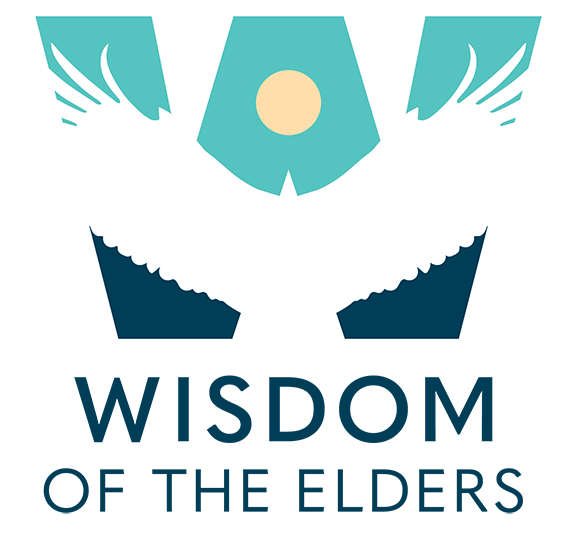
Mary Louise Defender Wilson
The black dog often found at Mary Louise Defender Wilson’s side is her Hokshina. That’s the dog’s name, and also the word for dog in Defender’s Dakotah language. Hokshina chases cows in the gumbo hills of North Dakota and makes Defender laugh.
Gumbo hills is a term for the rugged low hills of southwestern North Dakota. The geography of Defender’s life and culture, and that of her tribe for as far back as anyone remembers, comes alive in the stories she tells.
She was honored in 1999 with a National Heritage Fellowship from the National Endowment for the Arts. She has recorded two compact discs to which have been sold all over the United States and Europe.
In one story featured on the Wisdom of the Elders radio broadcast, Defender explains how hokshina saves the world over and over by ripping out the quill work of an elderly woman as she sits by the fire. If that quill work was ever finished, Defender said, the world would end.
But she doesn’t worry because hokshinas are persistent.
Born in October, 1930 to a family of midwives and storytellers, Defender was raised speaking Dakotah, the language of the Standing Rock Sioux. She is also Hidatsa. She began telling her tribes’ old stories when she was 11. As a little girl, she marveled at how much her grandfather knew. Now that she is older, she believes the old tribal stories, which talked about values and human nature, taught him to think deeply.
Defender met William Wilson at Haskell Indian Nations University in Lawrence, Kansas, in 1949. Wilson, a Navajo, had been a U.S. Marine and a code talker in the South Pacific during World War II. Though the United
States had classified most information about the code talkers until recently, Wilson told his bride bits and pieces of how Navajo Marines made Navajo words into a code, which helped the U.S. win the war.
On her husband’s Navajo reservation in the 1970s, Defender listened to Navajos who were telling old stories and reciting family linages with the purpose of bringing them back into circulation among the tribe. When Defender went home to Standing Rock in 1976 she asked the elders to teach her more stories.
She most enjoys telling stories at home in Dakotah with other people who can then tell her stories, too. She also travels extensively telling her stories at schools and concert halls in English, mixed with Dakotah words for a taste of where the stories come from. Standing on stage she is slender and tall wearing a floor length velvet red dress in a style traditional to her tribe. Her voice sounds, someone said, like “leaves falling in a stone canyon.” Suddenly, you know you are listening to someone doing something she was born to do.
Mary Louise Defender Wilson’s recordings include:
The Elders Speak
My Relatives Say
